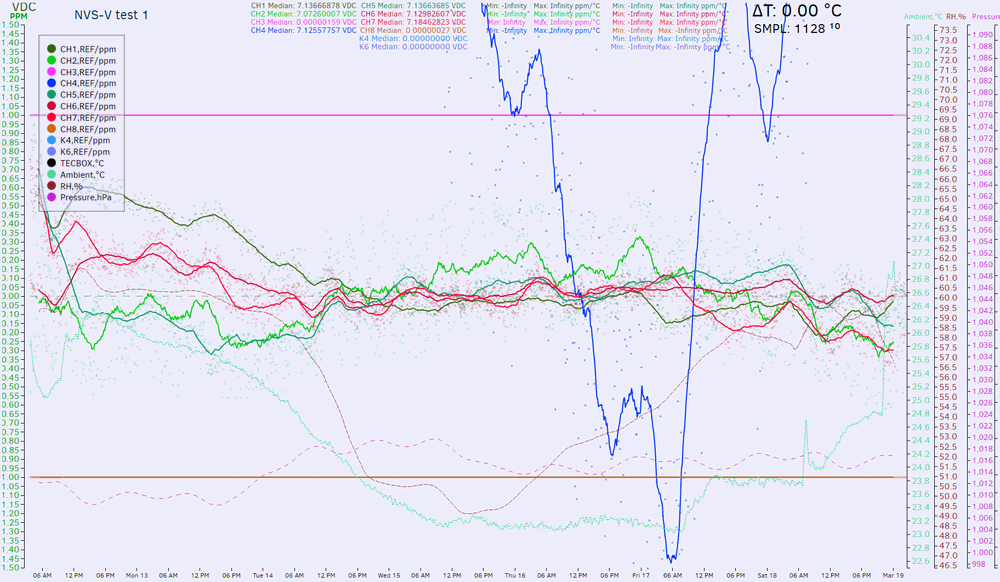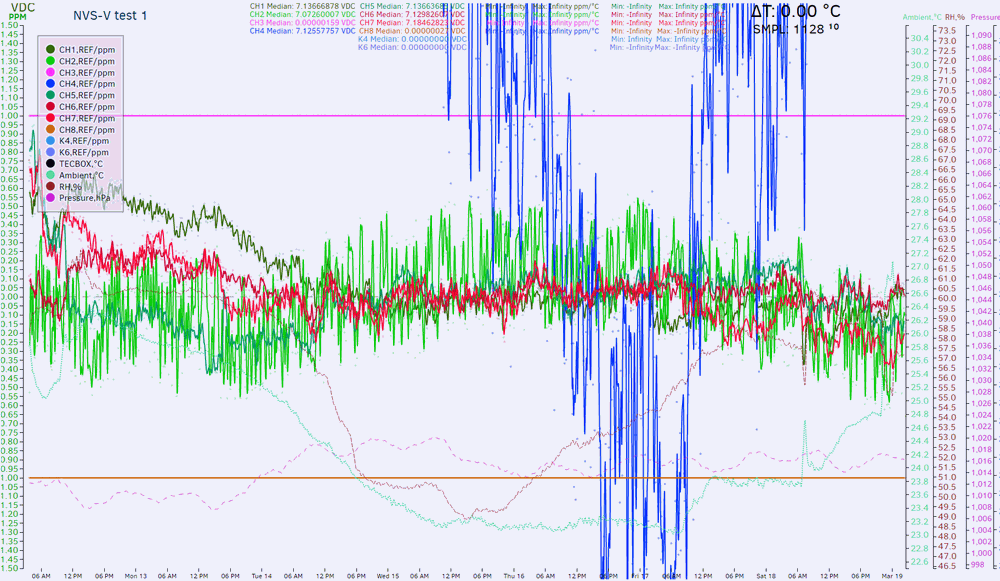I do live in Taiwan, but originally I'm from Ukraine, which is mm, sorta Europe 
To stay on topic, I was on a business trip last week. That means gear at home is unattended. Not to waste precious digits, I hooked recent setup with Keithley 7168 scanner to bank of my LTZ1000 references, output connected to both HP 3458A's and whole thing was collecting data for a week. Whole bank powered by Keithley 2400 at +11VDC.
Both 3458A's are within 0.5ppm apart, so I just averaged reading from both of meters and presented it as final sample. All references scanned in sequence with 10 seconds soak time between switching channels. Let's see the data. My main goal on this was to see if Keithley 7168 scanner can be used for sub-ppm level accuracy measurements.
One of channel ref was not happy (ch3), it's freshly built one, so will need to check on it later. Other one, channel 4 is crazy too, going all over the joint. But five other LTZs are happily running in subppm region, which is good start.

Here's averaged data with simple median of 32. CH7 bright red reference is HP A9 board, rest are my KX LTZ boards (both patched A01 PCB version and B01). I'll have to take stuff apart to give more details what is what, as some of them are LTZ1000A, other LTZ1000, and different opamps/resistors combo's too.
But hey, CH2 lime reference seem to be extra noisy, isn't it?
Reduce median filter to 2:

There is our good old jumper.

So now this is 3rd PCB on which same chip was installed, and it's safe to confirm that jumps are coming from the flakey LTZ itself, not the related circuitry around it. As side note, this data shows that properly working LTZ1000-based refs and behaving 3458A can achieve ~0.8ppm stability in mid-term, even without battery power or controlled temperature setup. Ambient temperature on 7 day graph log vary from +26C to +23C.
I'm happy with Keithley 7168, wish I'd have two of them now.
 RAW data and realtime page
RAW data and realtime page.